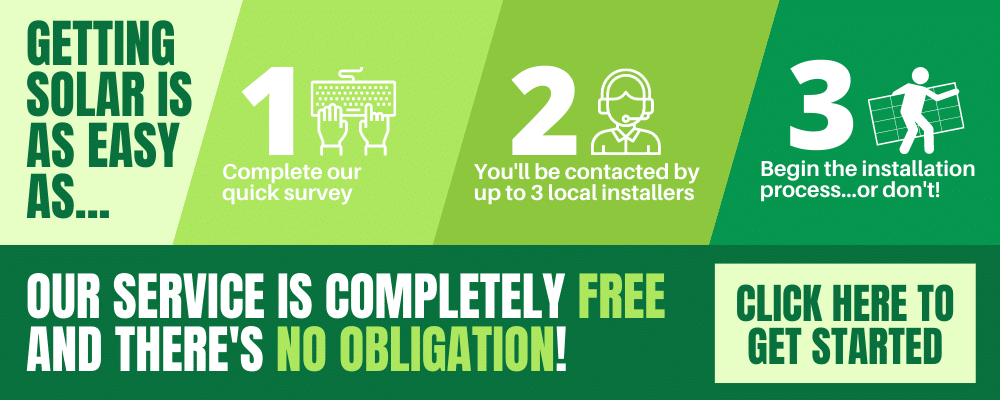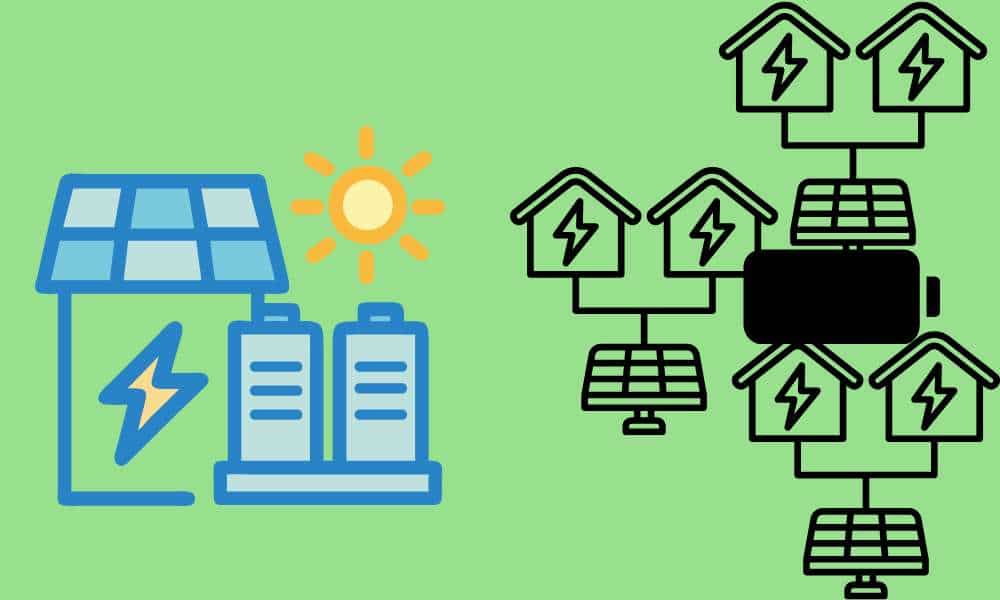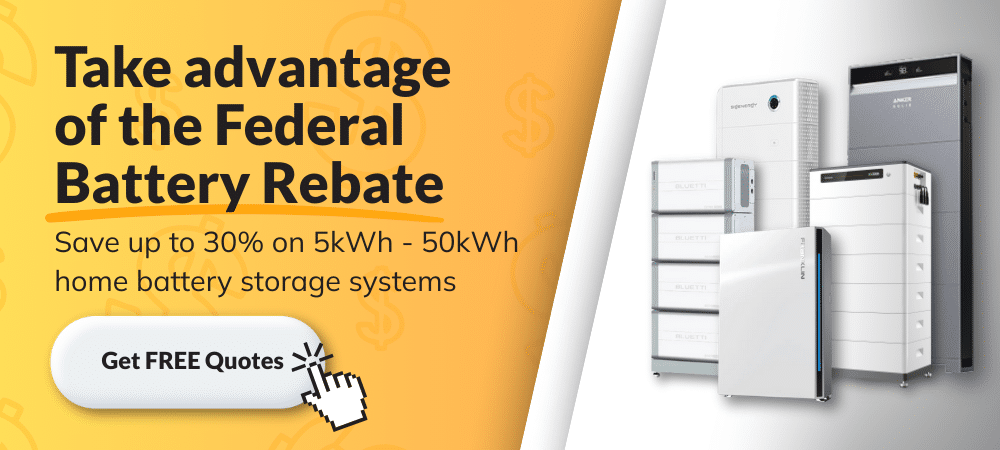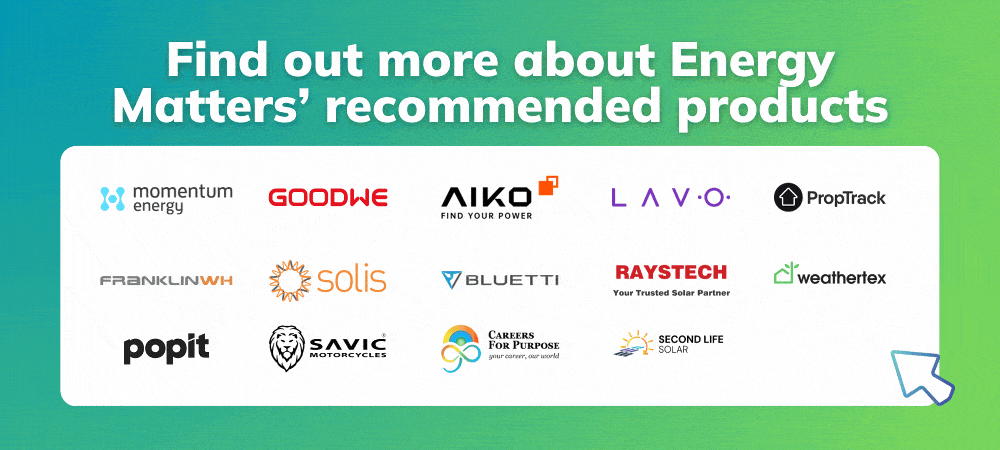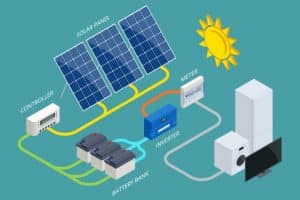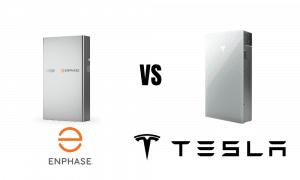Rising energy prices, grid instability, and Australia’s push towards decentralised energy are urging more families to consider solar batteries. But is a home battery system or a shared community battery better for your household this year?
The basics: The difference between home and community batteries
Home batteries are Behind-the-Meter systems installed alongside rooftop solar, storing excess energy for use at night or during blackouts. A typical home battery is around 5-20kWh, costing between AU$8,000-14,000 installed, depending on brand, capacity, and installer rates.
Community batteries are neighbourhood-scale systems storing energy collectively. They’re usually the size of a 4WD, holding 100kW-5MW, and allow households to virtually store excess solar for later use. There are no installation costs for a household; however, connecting to a community battery comes with ongoing fees.
In February 2025, ARENA announced a AU$143 million rollout to fund approximately 370 community batteries across Australia. This expansion includes installations in social housing estates, suburban streets, schools, and hospitals. The federal government’s commitment reflects confidence in community-scale storage as a critical enabler of Australia’s decentralised energy future.
Cost comparison
Home batteries come with a high upfront cost that pays back over time through reduced electricity bills, improved solar self-consumption, and blackout protection. However, their economics depend on your household’s solar generation size, daily consumption, local tariffs, and whether you value backup power during outages.
Community batteries usually operate on a subscription or virtual storage model, where households pay a monthly fee to access storage capacity. Because these systems are often subsidised by government funding or integrated into the grid operator’s broader infrastructure, participation costs are generally lower than owning a personal battery.
For example, Western Power’s trials in WA allowed households to store up to 6kWh daily for a flat fee of ~$1 per day, which many customers offset with their reduced peak usage charges. This model removes the need for major upfront investment while still enabling energy savings.
Savings potential
Home batteries save money by maximising solar self-consumption and optimising time-of-use (TOU) tariffs, while also providing backup power. Community batteries can reduce bills by allowing households to buy back their own solar at lower rates during peak demand. Trials in WA and NSW show community systems can generate up to AU$250,000 per year through grid services, passing benefits to subscribers.
Independence and reliability
Home batteries provide full backup power during outages, giving families energy security. Community batteries enhance neighbourhood resilience but depend on operator rules for backup access. However, in areas with high solar penetration, they stabilise local voltage and improve reliability for all. Generally, community batteries offer no blackout protection. When the grid goes down, so will your home’s access to power.
Equity and inclusivity
Home batteries favour owner-occupiers who can afford installation costs. Community batteries extend benefits to renters, apartment dwellers, and low-income households, addressing the country’s growing energy equity concerns. ARENA’s recent funding prioritises diverse sites, ensuring more people gain access.
Scalability and leadership
Despite their promise, the Monash Energy Institute warns that Australia currently lacks a national leader to drive standardised community battery business models, governance frameworks, and rapid scaling. Without coordinated leadership, fragmented pilots risk limiting broader adoption and delaying the benefits of decentralised storage for households.
Energy Minister Chris Bowen has called for further ARENA funding to accelerate community electrification, highlighting batteries as crucial to Australia’s renewable energy targets. Greater federal-state collaboration is expected in the coming year to establish market clarity for community-scale storage investments.
Environmental and grid benefits
Both options reduce emissions, but community batteries improve grid efficiency at scale. By pooling energy use, they lower per-household storage needs, enable greater rooftop solar uptake, and reduce congestion without costly grid upgrades.
Which is right for your family?
Ask yourself:
- Can I afford AU$8,000-14,000 upfront? > A home battery may suit you.
- Do I want backup power in outages? > Home battery wins here.
- Am I a renter or in an apartment? > Community battery is the viable choice.
- Do I want to support local grid stability and share benefits with neighbours? > Community battery fits.
With ARENA’s AU$143 million community battery rollout underway and further funding expected, shared storage is fast becoming a practical choice for Australian families in 2025.
Whether you invest in your own battery or join your neighbours in a community system, batteries are no longer just an environmental choice – they’re becoming an essential part of future-proofing your family’s energy security and savings.







